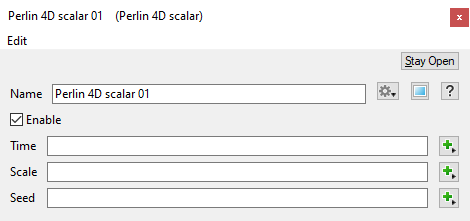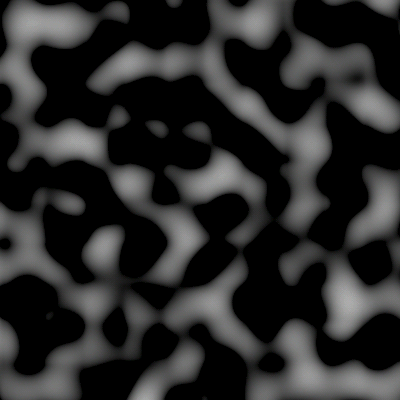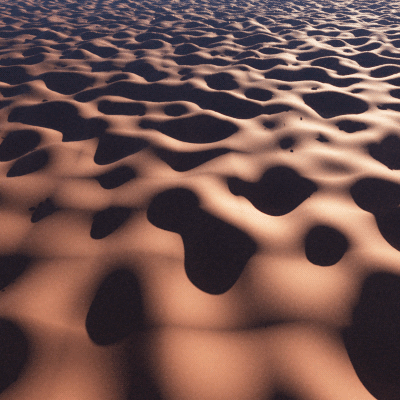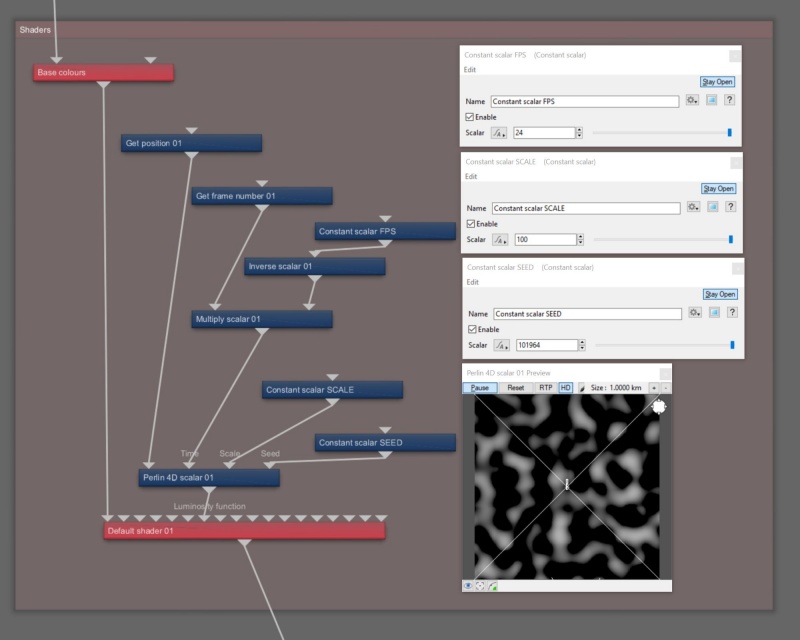Perlin 4D Scalar
Overview[edit]
This node generates Perlin noise and outputs the noise value as a scalar. The output value ranges between -0.5 and 0.5. This node has a Time parameter which allows the noise pattern to change over time. Here is an example of the noise pattern generated by the node:
This node requires a Get position, Get position in geometry, or Get position in texture function node to be assigned to its Main input so that the current render state knows where a sampled point is located in texture space. In the example below, the current frame number is converted to time based on the number of frames per second, then assigned to the Time parameter.
Settings:
- Name: This setting allows you to apply a descriptive name to the node, which can be helpful when using multiple Perlin 4D scalar nodes in a project.
- Enable: When checked, the node is active, and when unchecked the node is ignored.
- Time: The shader or function nodes assigned to this setting, sets the time value.
- Scale: This setting controls the overall scale of the noise pattern generated. Increasing the scale value makes it seem like the cells in the noise pattern are larger.
- Seed: The setting controls the noise pattern generated. Each seed value generates a slightly different pattern.
A scalar is a single number. 1, 200.45, -45, -0.2 are all examples of scalar values.
A parameter is an individual setting in a node parameter view which controls some aspect of the node.
A single object or device in the node network which generates or modifies data and may accept input data or create output data or both, depending on its function. Nodes usually have their own settings which control the data they create or how they modify data passing through them. Nodes are connected together in a network to perform work in a network-based user interface. In Terragen 2 nodes are connected together to describe a scene.
A shader is a program or set of instructions used in 3D computer graphics to determine the final surface properties of an object or image. This can include arbitrarily complex descriptions of light absorption and diffusion, texture mapping, reflection and refraction, shadowing, surface displacement and post-processing effects. In Terragen 2 shaders are used to construct and modify almost every element of a scene.



